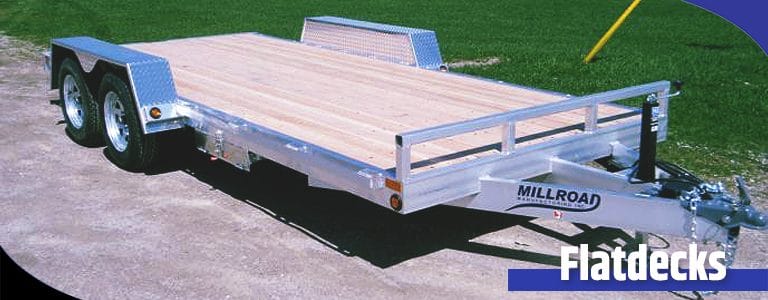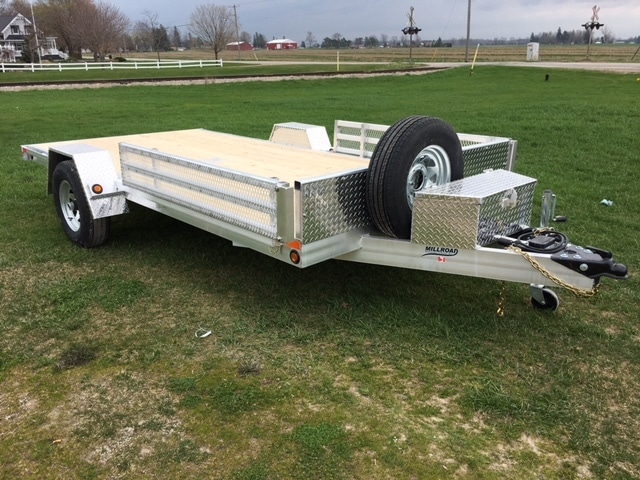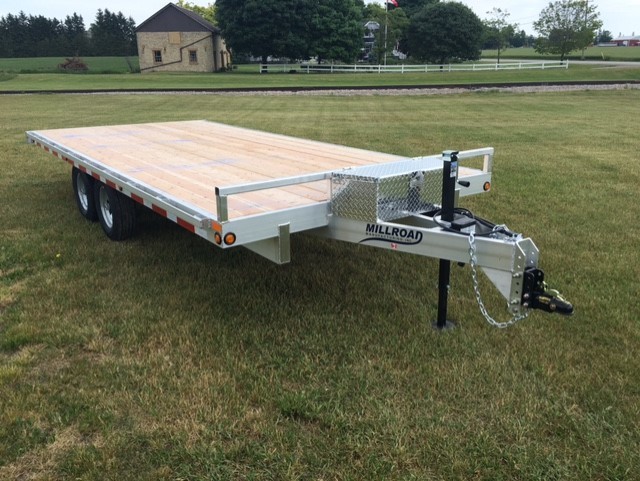
April 14, 2020 Last updated on June 16, 2023 by Bob Fisher Bob Fisher Flatdeck Trailers
For people who are new to hauling, it can be surprising to see just how many trailer types and options are available. The good news is that you are not on your own — we are here to make every step of your buying experience easy, from the research to the final delivery. One thing that we get asked about a lot is the difference between deckover and flat deck trailers.

The two trailers are similar enough that at a glance they look the same. However, there are two ways the platform can be positioned on the trailer, which leads to other differences.
Flat deck trailers are built with the deck between the trailer wheels. This simple design is the most popular type of trailer, so you have undoubtedly seen them on the road. The trailer is not high above the ground, which gives it a low center of gravity and makes it easy for you to load and unload.
Deckover trailers have a deck that sits above the trailer wheels. This makes the platform higher and wider than the traditional flat deck option, giving you more ground clearance and loading space. You typically see fewer of this type of trailer on the road today, but they are becoming increasingly common.
With an understanding of the differences in design, take a closer look at how the two types are used.
When you consider all the loads that flat deck trailers are well suited for, it is little wonder that they are the most popular type of trailer. In general, a flat deck trailer is a great option for any of these loading and hauling circumstances:

Deckover trailers are generally more appropriate than flat deck trailers when your loading and hauling have particular requirements:
Now that you understand more about flatdeck and deckover trailers, you are one step closer to getting the right trailer for your needs. As you are looking at your options, reach out to us. The service we provide here at Millroad goes far beyond selling trailers. We have experts who listen to your needs and then work with you to find the best trailer for your situation. With all the trailer types and customization that we offer, we can build something that is designed with your exact situation and feedback in mind.